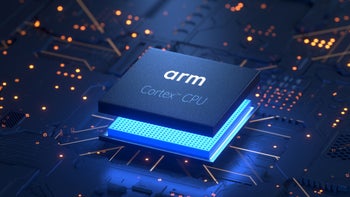What is Koomey's Law and why could it replace Moore's Law in importance among chip makers?

Gordon Moore is the co-founder and chairman emeritus of Intel and is the person who created Moore's Law. The latter is the observation made by Moore starting in the mid 1960s and still in effect today that notes how the transistor count on chips double every other year. But the low-hanging fruit has been picked and while there are road maps to 3nm and 2nm, the big question is whether Moore's Law has legs at 1nm and below.
Koomey's Law, measuring performance per watt, could be the replacement to Moore's Law
According to Rob Aitken, Fellow & Director of Technology, ARM (the company known for its CPU architecture), during the period that Moore's Law was in effect transistor size has shrunk dramatically. Originally, only 2,250 transistors could fit inside a space covering 12 square mm; these days over one hundred million transistors can fit inside a square mm. Apple's M1 chip, manufactured by TSMC using its 5nm node, is packed with 16 billion transistors.

ARM says that the tech roadmap no longer is focused on processing power
In the ARM Blueprint blog, Aitken writes, "It’s clear that the tech roadmap can no longer focus on increasing processing power alone. Squeezing more performance out of the same chips remains a top priority, and performance per watt is where it’s at. But it’s more than just watts – it’s also energy, the amount of power consumed over time."
So while Moore's is a measurement of a chip's processing power, Koomey’s Law was created in 2010 and measures the number of computations per joule of dissipated energy. From 1945 to 2000, this number doubled every 18 months (rising 100x per decade). Since then, the number has declined and has doubled every 2.6 years (16 times per decade).
ARM's Director of Technology points to an upcoming focus on saving energy, reducing energy consumption, and keeping the planet green
As ARM's Aitken states, "Koomey’s Law is arguably more relevant to the way consumers experience computing today – and the way we should be constructing tech roadmaps. Our digital life tends to span multiple devices, where battery life and performance per watt are more important than gross performance alone." In other words, in trying to reduce the use of carbon "for the sake of our planet," the tech roadmap must no longer put processing power first above saving energy and keeping the planet clean.
Perhaps the most interesting comment made by the ARM's Director of Technology on its blog is that "Moore's Law and Koomey's Law are not laws of nature but observations on technology direction, and we can use them to see where things might be heading. Moore's Law led manufacturers of chips to focus on increases in processing power over time.
Koomey's Law is concerned with how many computations can be squeezed out for each unit of energy spent. Observing this "law" is favorable for the environment and Aitken says that maximizing performance per watt is something that has been in its DNA since the beginning. As ARM says, "Connectivity cannot come at the expense of our planet. To minimize the environmental impact of our technology, we aspire to leverage our expertise in low-power compute to do more work per Watt, providing a unique opportunity to drive up connectivity while driving down carbon consumption."
Despite a newfound focus on the environment, energy, and low-power processing, Moore's Law still has some time left on the clock. TSMC will produce 4nm chips this year and 3nm chips starting in the second half of next year. Both TSMC and its rival, Samsung Foundry, have plans to take them down to 2nm. But things remain up in the air once the chip-making industry starts moving toward the 1nm process node.
In the past foundries have been bailed out by new technology such as EUV (Extreme Ultraviolet lithography) which allowed foundries to mark up wafers for the placement of billions of transistors. Whether or not some new tech is developed to help Moore's Law remain relevant, Koomey's Law could continue to gain notoriety as chip makers start focusing on energy over processing power.










Things that are NOT allowed: